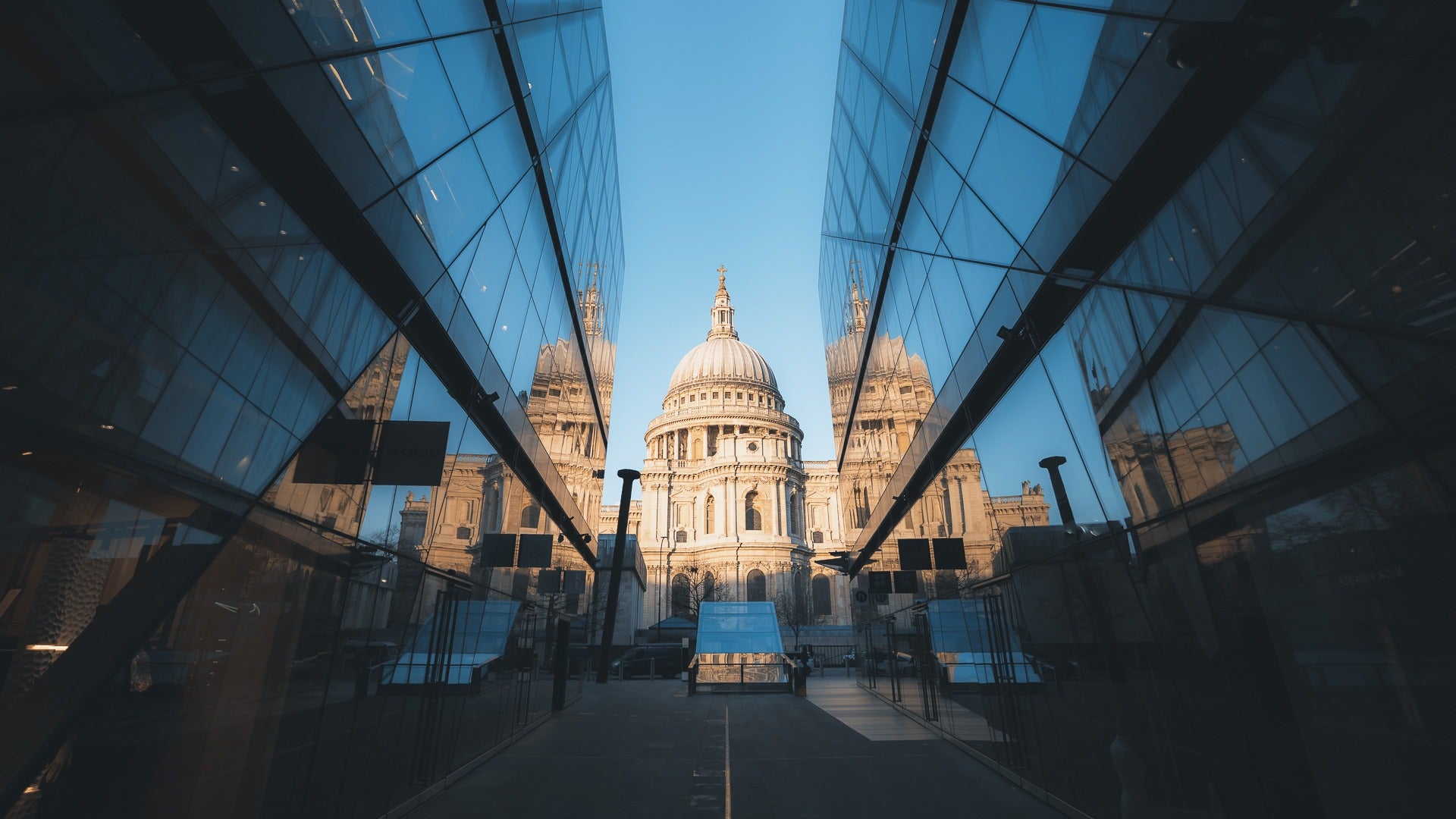Aperture is one of the three core pillars of the exposure triangle in Photography.
It’s an essential aspect to understand, and although it can be a deep, technical subject, this article aims to give you enough of a basic understanding to start to be able to use Aperture intentionally for a wide range of purposes.
New to Photography?
Read about the basics of Exposure and the Exposure Triangle first!
What is Aperture?
Simply put, Aperture refers to how big or small the opening of your lens is.
The size of this opening controls the amount of light let through the end of your lens, which then passes onto the sensor of your camera.
The larger the hole, the more light. The smaller the hole, the less light.

A common analogy we can use is that of the human eye and our pupils.
In a bright scene like walking outside, there is typically a lot of ambient light available. In order to see, our pupils usually become smaller because there’s lots of light around, as they don’t need to let as much light in for normally exposed vision.
However at night when it’s dark, and there’s less light, our pupils dilate and get bigger. The increase in size lets our eyes and pupils pick up more ambient light, and thus enables us to see correctly.
Aperture is about adjusting the available amount of light.
It’s the same with our lenses and the Aperture they control. It’s all about adjusting the available amount of light.

Aperture’s relationship to shutter speed, ISO, and overall exposure
In conjunction with Shutter Speed and ISO, these three elements form what’s referred to as the “Exposure Triangle”.
Abstractly, the Exposure Triangle is a 3-sided balancing game to control the amount of available light to adjust how bright or dark your image will end up being.
Each of these three components can independently control how dark or light your image ends up being, so controlling one area while being mindful of the others is paramount.
I’ll have more articles that will deep dive into this topic in the very near future, so look out for those.
F-stops
Aperture is measured in f-stops.
On lenses, you may typically see f-stops measured in increments such as f/1.4, f/2.8, f/4, f/8, f/16, and so on. These numbers are arranged in increments that measure what’s referred to as a “stop” of light.
There are equivalent values for Shutter speed and ISO that measure “stops” of light too. But all you need to know at this point is that a “stop” of light is an abstract method used to measure light.
Note It’s only Aperture that receives special naming treatment of the colloquial “f-stop”. There’s no such thing as “s-stop (for Shutter Speed)” or “ISO-stop (for ISO)”. They’re all the same measurement; merely “stops” of light.
Large vs small
Although the numbers are usually arranged in smallest to largest, I wouldn’t blame you if you assumed that the smaller numbers mean a smaller hole.
Unfortunately, though, it’s reversed; the smaller numbers (e.g f/2.8) mean a bigger opening, while the bigger numbers (e.g f/16) mean a smaller opening.
Note This is all relative to the physical size of the lens and the front element and other things, but it’s all very technical and not very important for now.
This is something that’s confusing when you first begin to understand Aperture, but you’ll get used to it.
For now though, just remember; smaller number = bigger opening, bigger number = smaller opening.

How Aperture affects depth of field
While it’s most useful to think of Aperture’s primary function as controlling available light, a close secondary function is how it affects depth of field.
What is depth of field?
Depth of field refers to how “focused” and “sharp” an image appears to be.
If you put up your hand 15cm in front of your face and stare at the lines on your palm, while you focus on the details of your hands, notice that in your peripheral vision everything around your hand is blurry and out of focus.
We call this a “shallow” depth of field, or a “thin” depth of field. It means that there’s not much of the “field” in focus. The blurry stuff is called “Bokeh” (pronounced “boke”, like “bo-keh”. Not “bo-ka” or some other crazy way - there’s only one correct way to say it). It’s the kind of effect you get on lenses that have Apertures of f/2.8 and below, and it’s the effect that Portrait Mode on your phone tries to emulate.
Now, put your hand up in front of your face again, focus on the palm, and now put your hand down. You’ll notice that once your eyes adjust, everything that is past where your hand was is in focus; most of the things you look at will be in focus.
The human eye has a “deep”, “big”, or “large” (call it whatever you like) depth of field. Everything from around 15cm to infinity is in focus.
With lenses, we mimic this depth of field behaviour by adjusting the f-stop of the lens. The lower the f-stop (e.g. f/1.4), the shallower the depth of field, the less is in focus. The higher the f-stop (e.g. f/22), the deeper the depth of field, the more is in focus.

Let’s talk lenses
Buying lenses comes with a lot of numbers and options and manufacturers and qualities and a whole bunch of confusing stuff.
But if you remember these few things, you’ll be much better prepared for your next purchase, or you’ll better understand the lenses you might already have.
Fast lenses and slow lenses
You might hear people talk about this idea of fast lenses and slow lenses.
But how can lenses be fast or slow? Well, what people are referring to is the maximum Aperture of the lens.
Fast lenses have big maximum Apertures (e.g f/1.4).
They’re “fast” because shooting at these larger Apertures means that the lens is gathering a lot of light, meaning that you may have excess light to spend, and (according to this terminology) you’ll probably spend that on Shutter Speed.
A fast Shutter Speed is beneficial for capturing subjects that are moving, such as in Street photography, Portraiture, Sport, and the like.
Slow lenses have smaller maximum Apertures (e.g f/4 or f/5.6+).
The difference between an f1.4 lens and an f/4 lens is /3 stops. This means if you are shooting with an f/4 lens, the lens will either produce an exposure that is three stops darker with equivalent maximum settings or, you’ll have to compensate using another pillar from the Exposure Triangle - either Shutter Speed or ISO.
Sometimes, that’s fine. Sometimes, it’s not. Specifically in darker scenes, having slow lenses can become challenging especially as your ISO starts to get high to the point where it produces too much grain.
It may also be challenging to use a slower Shutter Speed to compensate because shooting moving subjects with too slow of a shutter speed will produce drag and blur, which may not be desirable for the type of image you’re going for.
That said, slower lenses do have their positives too. See the “Quality vs price - f/4 and higher” section below.
Quality vs price
The maximum Aperture a lens comes with is usually a suggestion (but not always!) of its quality and subsequently, its price.
f/2.8 and lower
Lenses with a maximum Aperture of f/2.8 and lower are generally considered higher quality than say, f/4 or higher.
Typically for zoom lenses, the f/2.8 version of most brands typically represent the pinnacle of excellence that the brand has to offer.
For example, Sony’s G-Master series and just about every other manufacturer’s top-of-the-line will have a “Holy Trinity” of zoom lenses - a 16-35mm, 24-70mm, and 70-200mm.
Typically these will all come in f/2.8 and f/4 variants, where the f/2.8 version will also come with things like increased sharpness, a rugged build, water resistance, and the like.
Typically for prime lenses, the f/1.4 version of a focal length represents the pinnacle of excellence that brand has to offer for that length.
Typical focal lengths might be 35mm, 50mm, 85mm and everywhere in-between. And you bet that most manufacturers will have f/1.4 versions of those focal lengths as their most expensive, most specced up lenses, again with increased sharpness, (usually) smaller size, rugged build, and the like.
You’ll find that typically, these kinds of lenses are more for serious hobbyists and professionals who need the highest quality.
f/4 and higher
Lenses that come in f4 or higher maximum apertures /typically represent good or decent performance at a much lower price.
These lenses are usually smaller, cheaper, and lighter than their more expensive counterparts; however, they’re also less sharp, often less resistant to the elements, and will probably be built with cheaper materials to keep the cost down.
However, they certainly get the job done, and they should never be underestimated. Expensive gear is nice, but in the world of lenses, diminishing returns comes relatively fast north of this price bracket.
You’ll find that typically these lenses are suitable for most people, most of the time.
How to pick the right Aperture for:
These are general recommendations for different styles of photography you may want to experiment with in terms of Aperture.

Portraits
The faster the better - f/1.2, f/1.4, f/1.8, f/2.0, f/2.8. These are all common Apertures that are very fast and allow for the shallowest depth of field.
At such a shallow depth of field, this means all the focus is all on the person, and the rest of the background fades into creamy, out-of-focus bokeh.
With Portraits (and any other style of photography really) subject isolation is key to telling good stories. A shallow depth of field helps with focus and subject isolation and is a great tool for leading the viewer's eyes to where you want them to be focused on in the image.
Street Photography
Due to the frantic nature and technical difficulty of Street Photography, for beginners, a medium amount of depth of field such as f/4 to f/8 provides most photographers with enough leeway to slightly miss their focus and still have enough depth of field to ensure a sharp shot.
However, as you progress in your technical proficiency, more traditional Street Photographers swear by the zone focusing technique and the “f/8 and be there” rule. These techniques have worked well in the past, working around the restrictions of older cameras and older focus systems, however with the advancement of modern auto-focus (especially on 2018+ model cameras), photographers who choose to master their auto-focus (using a superior targeting mode in conjunction with continuous auto-focus) can achieve far superior results with even razor-thin apertures.
I shoot almost all of my Street Photography at f/1.4, which provides a unique look to what is traditionally seen in contemporary Street Photography. This is my personal preference, but as always, the choice is yours.

Landscapes
Due to subjects in landscapes usually being quite far away, generally, landscapes are shot using a medium to a longer depth of field; typically anywhere between f/5.6 to f/11.
This has the effect of enabling the entire scene to be in focus, while also sitting in the “sharpness zone” of most lenses; an area where the lens usually performs the sharpest (more on this in an upcoming “Advanced Aperture” article).
Of course, anything goes depending on the available light, access to a tripod, hand-held, or stationary. But as a general guideline, f/5.6 to f/11 for most conditions will be your go-to.
tl;dr
Aperture is a critical part of the three pillars of exposure. Primarily, it controls the size of the hole at the end of your lens, meaning it controls the amount of available light able to be seen by the sensor inside your camera.
This light is measured in f-stops, and the smaller the f-stop number (e.g. f/1.4), the larger the hole and thus more available light. The larger the f-stop number (e.g. f/22), the smaller the hole and therefore less available light.
Secondarily, Aperture controls the depth of field, where a smaller f-stop number commands a shallower depth of field (think Portrait Mode on your smartphone), and a larger f-stop number controlling a larger depth of field (like what your eyes see most of the time where everything is in focus). Both have creative uses and a recommended time to make the most out of them.



